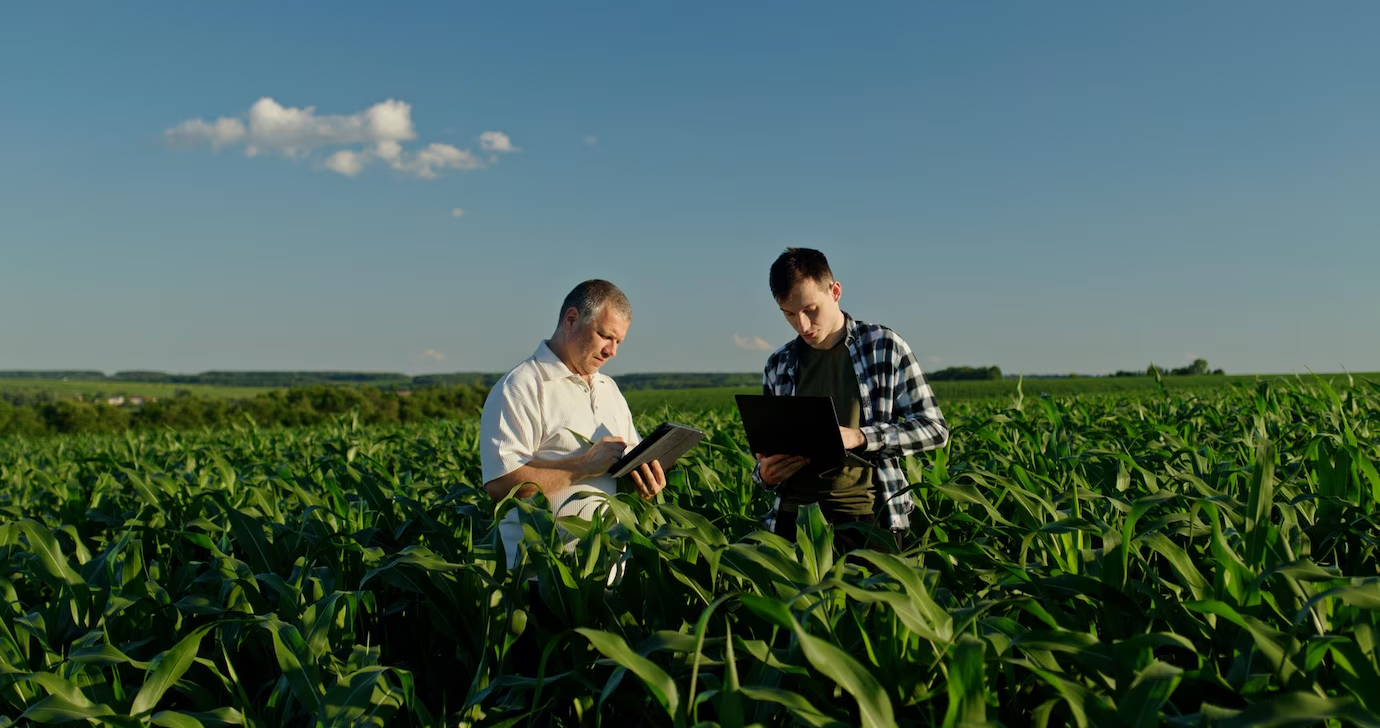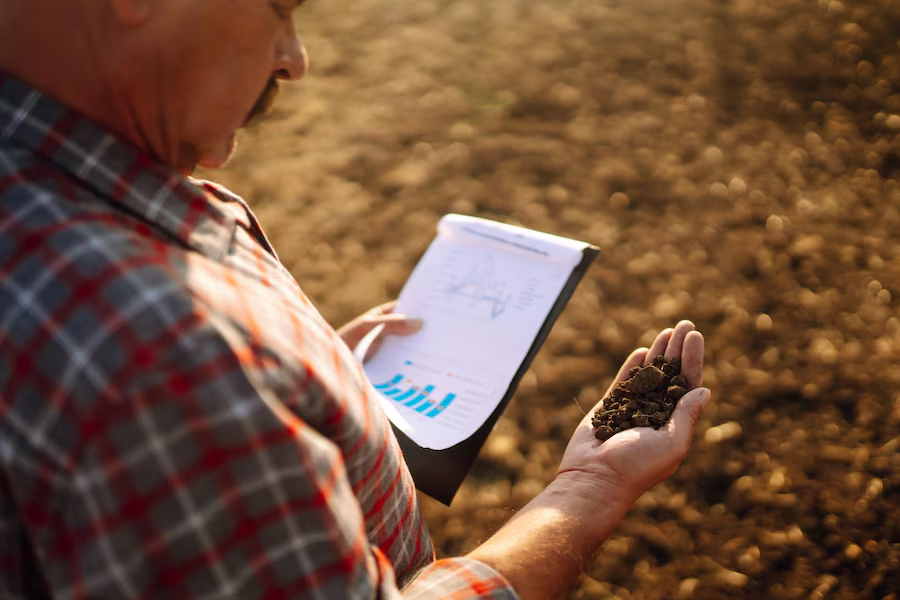
In an era of economic uncertainty and volatile stock markets, investors are increasingly seeking stable, inflation-resistant assets. One such asset, often overlooked yet historically resilient, is farmland. The question is: Is investing in farmland truly worth it? This article explores farmland investment in depth—from its definition and advantages to the risks and various entry methods.
What Is Farmland Investment?
Farmland investment involves acquiring or financially supporting agricultural land with the goal of generating income or achieving long-term appreciation in value. Investors can profit in various ways, such as leasing the land to farmers for steady rental income, sharing in crop revenue, or benefiting from the rising market value of the land itself. As a real asset, farmland serves both as a productive resource and a store of wealth—offering opportunities for both passive and active investors.
Definition of Farmland as a Real Asset
Farmland is considered a tangible, income-generating real asset, meaning it has a physical presence and inherent value. Unlike stocks or bonds, which are financial claims subject to market sentiment, farmland produces essential goods: food, fiber, and biofuels. This connection to the global food supply chain gives it intrinsic worth. Moreover, farmland is a finite resource. Urban development, soil degradation, and climate change are reducing the amount of arable land available, while the global population—and therefore food demand—continues to rise. This supply-demand imbalance makes farmland an increasingly attractive asset class for long-term investors.
Types of Farmland Investments
There are multiple ways to invest in farmland, each with its level of involvement, risk, and return potential. Investors can choose the path that best fits their financial goals, time horizon, and expertise.
Direct Ownership is the most traditional method. It involves purchasing farmland outright and either farming it personally or leasing it to an experienced operator. This option offers full control over the land and the potential for both rental income and capital appreciation, but it also requires substantial upfront capital and management responsibilities.
Farmland REITs (Real Estate Investment Trusts) provide a more accessible, hands-off approach. These are publicly traded companies that own and manage farmland across multiple regions. Investors buy shares in the REIT, earning returns through dividends and stock value appreciation. REITs are ideal for those looking for liquidity and ease of entry, although they may offer less transparency and control over specific properties.
Crowdfunding Platforms Online crowdfunding platforms now allow individuals to pool resources and invest in fractional shares of farmland projects. These platforms typically provide detailed property data, projected returns, and professional land management services—making farmland investing more accessible than ever before.
Leasing Arrangements also offer opportunities. In this model, an investor purchases the land and rents it to a farmer for a fixed annual payment. Lease terms can vary but often provide consistent cash flow with minimal day-to-day involvement.
Each of these approaches carries different levels of risk and reward. Direct ownership offers high control and potential returns but comes with higher risk and capital requirements. REITs and crowdfunding offer lower barriers to entry and better liquidity but may limit investor influence over the land.
Comparison with Traditional Real Estate Investing
Farmland investment differs significantly from traditional real estate sectors like residential or commercial property. While conventional real estate typically depends on occupancy rates, rental pricing, and market cycles, farmland derives value from agricultural productivity and commodity prices. Income is less influenced by local economic swings and more by factors such as soil health, climate conditions, and global food demand.
Another major difference is how farmland performs in broader financial markets. Farmland has historically shown a low correlation with equities and bonds, making it a strong portfolio diversifier. During periods of market turbulence or inflation, farmland often holds its value or continues generating income, providing a cushion against volatility.
Furthermore, while residential and commercial real estate can be impacted by changing interest rates and urban trends, farmland is driven by longer-term global forces—such as food consumption patterns, technological advances in agriculture, and environmental sustainability. This gives it a distinct role in an investor's asset allocation strategy.
Why People Are Turning to Farmland as an Investment

Over the last two decades, farmland has gained traction as an alternative asset class. Here’s why:
Inflation Hedge and Portfolio Diversification
Farmland acts as a natural hedge against inflation. When the cost of living rises, so do food prices—boosting the profitability of agricultural land. Additionally, because farmland has shown a low correlation with other asset classes, it helps balance portfolio volatility.
Growing Global Demand for Food and Commodities
The global population is expected to surpass 9 billion by 2050, driving higher demand for agricultural production. At the same time, arable land is shrinking due to urbanization and climate challenges. This imbalance increases the value and relevance of farmland assets.
Historical Performance vs. Stocks and Bonds
According to USDA data and industry reports, U.S. farmland has delivered average annual returns of 10–12% over the past several decades—outperforming many traditional investment classes with significantly lower volatility.
Key Benefits of Investing in Farmland
Beyond strong historical performance, farmland offers several strategic advantages to investors.
Passive Income Through Leasing
Farmland can generate consistent income through cash rents or crop share agreements. In a typical lease, a farmer pays a fixed amount per acre annually, regardless of yield performance—providing reliable income for the landowner.
Long-Term Capital Appreciation
Over time, farmland tends to appreciate steadily, driven by increasing global demand, scarcity of arable land, and improvements in agricultural technology. Unlike urban real estate, which can fluctuate with economic cycles, farmland values are tied to long-term macroeconomic trends.
Low Volatility Compared to Equities
Farmland’s performance is not tied to the emotions of stock markets. Price swings are less frequent and less severe. This makes farmland a stable store of value—even during recessions or financial crises.
Tax Advantages in Some Jurisdictions
Depending on your location, farmland may offer tax incentives, such as reduced property taxes, conservation easements, or deferral of capital gains. Consult a local tax advisor to understand how farmland can fit into a tax-optimized investment plan.
Risks and Challenges of Farmland Investment

While farmland is attractive, no investment is without risk. Understanding the potential downsides is key to building a sound strategy.
Climate and Environmental Risks
Farmland is directly impacted by weather conditions, water availability, and long-term climate change. Drought, flooding, or extreme temperatures can disrupt production and reduce income.
Market Access and Crop Price Fluctuations
Farmland profitability depends on commodity prices, which are subject to global supply and demand, trade policies, and geopolitical tension. When crop prices fall, so does the income potential.
Liquidity Concerns
Unlike stocks or mutual funds, farmland is not a liquid asset. Selling land can take weeks or months, depending on location and demand. This makes it unsuitable for short-term investors.
Operational and Tenant Risks
In cases where land is leased, the landowner depends on the competence and integrity of tenants. Poor farm management can lead to reduced yields or even environmental degradation.
How to Invest in Farmland
There’s no one-size-fits-all approach. Let’s explore the four main methods to get started.
Direct Ownership
Purchasing farmland directly gives you full control and the potential for the highest returns. You can:
- Lease the land to experienced farmers.
- Farm it yourself if you have the expertise.
- Improve it through irrigation, fencing, or soil management to boost long-term value.
However, direct ownership requires significant capital and active management.
Due Diligence and Zoning Considerations
Before buying land, investigate:
- Soil fertility and water access
- Zoning regulations (Can the land be used for agriculture?)
- Property taxes and local ordinances
- Nearby infrastructure and market access
Engaging with a local agricultural consultant is highly recommended.
Farmland REITs (Real Estate Investment Trusts)
REITs offer exposure to farmland with lower entry costs and high liquidity. They trade like stocks and often pay regular dividends.
Pros:
- Easy to buy/sell
- Diversified holdings
- Managed by professionals
Cons:
- Less direct control
- Market-linked volatility
- Limited transparency into individual properties
Factors to Consider Before Buying Farmland

Before investing in farmland, it's essential to evaluate several key factors that can significantly influence the land’s productivity, profitability, and long-term value. Farmland is a complex asset, and making an informed decision requires a combination of agricultural knowledge, market awareness, and legal due diligence.
Soil Quality and Water Access
The foundation of any successful farmland investment lies in the quality of the soil and access to water. Productive soil supports higher yields and a wider variety of crops. Investors should request professional soil tests to assess important indicators such as pH levels, organic matter content, nutrient balance, and drainage capability. Equally important is the availability and reliability of water. Farmland without access to water rights, irrigation systems, or a dependable natural water source may limit its usability and diminish its value. In drought-prone areas especially, water access can make or break an investment.
Proximity to Markets or Transport
Location plays a critical role in determining operating costs and logistical efficiency. Farmland situated near transportation infrastructure—such as highways, rail lines, grain elevators, or ports—allows for easier and cheaper distribution of crops to buyers and processors. The closer the land is to these facilities, the lower the costs for fuel, trucking, and storage. Additionally, being near established agricultural hubs may provide access to skilled labor, farming services, and equipment suppliers, all of which contribute to operational efficiency.
Legal Regulations and Land Rights
Before finalizing a purchase, conduct thorough legal due diligence to confirm that the land has a clear title, no outstanding liens, and well-defined boundaries. Legal complexities, such as easements, inheritance disputes, or unclear zoning regulations, can lead to costly complications. In some regions, there are restrictions on foreign ownership or limitations on how land can be used. Understanding local and national land-use laws is essential to ensure that your investment aligns with your intended purpose, whether it’s leasing, farming, or future development.
Local Agricultural Trends and Crop Types
Not all farmland is suitable for every type of crop. Understanding the agricultural landscape of the region is vital to projecting your potential returns. Investigate what crops are commonly grown in the area, how consistent yields have been over time, and what the local climate supports. Some areas may specialize in staple grains like corn, wheat, or soybeans, while others may be better suited for fruits, nuts, or specialty crops. Trends in consumer demand, market access, and farming technology also play a role in determining what crops are most profitable. Connecting with local extension services, agronomists, or neighboring farmers can provide valuable insights into the region’s agricultural viability.

Get a no-obligation offer in just a few minutes.





.webp)




.webp)
